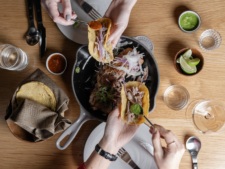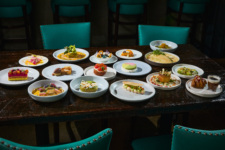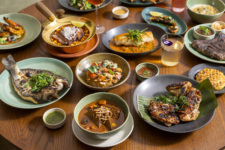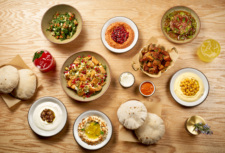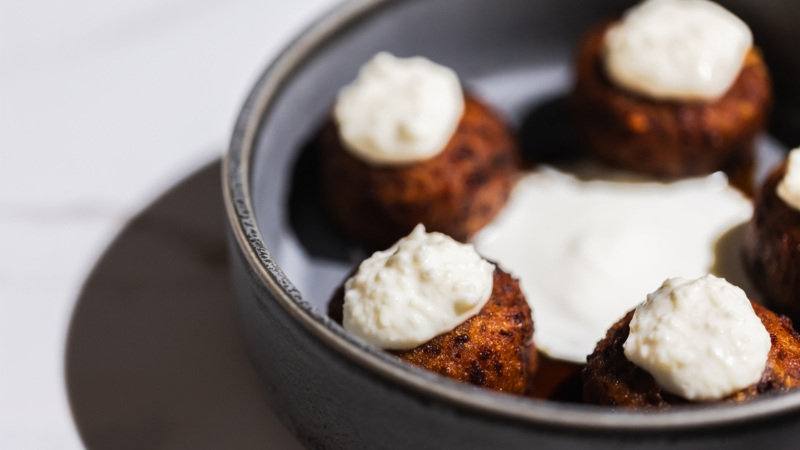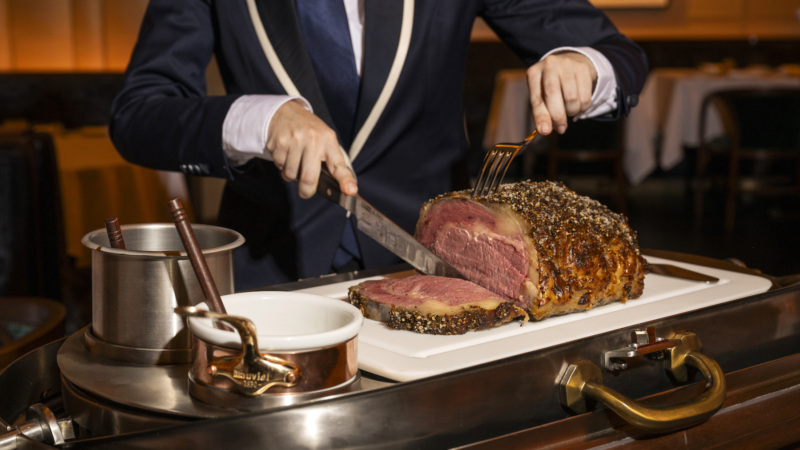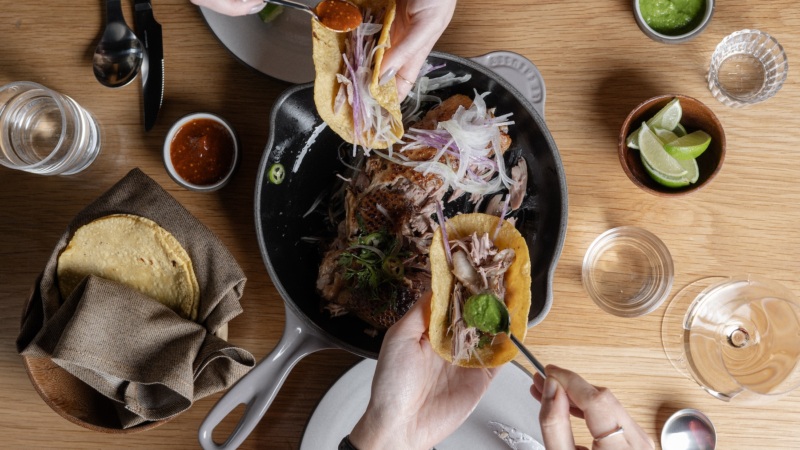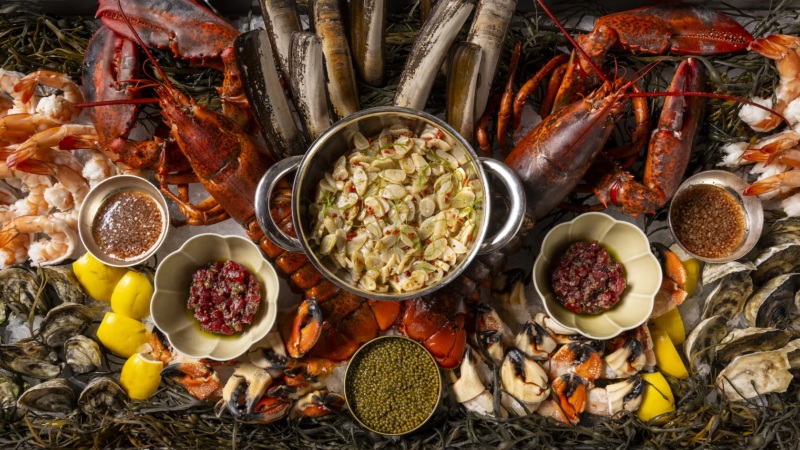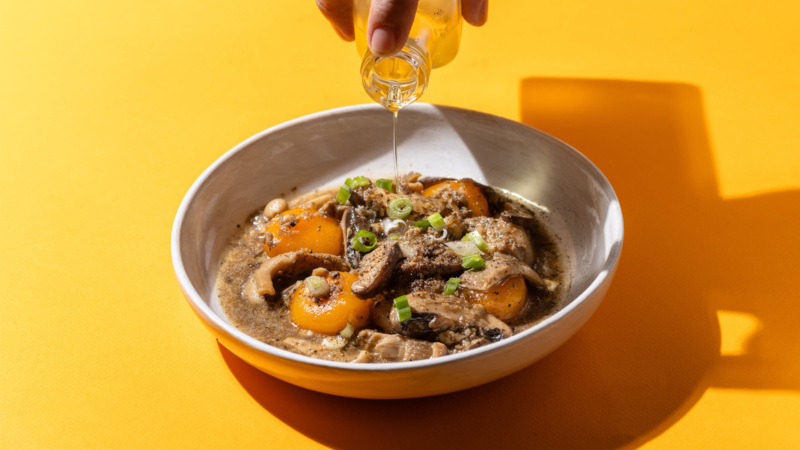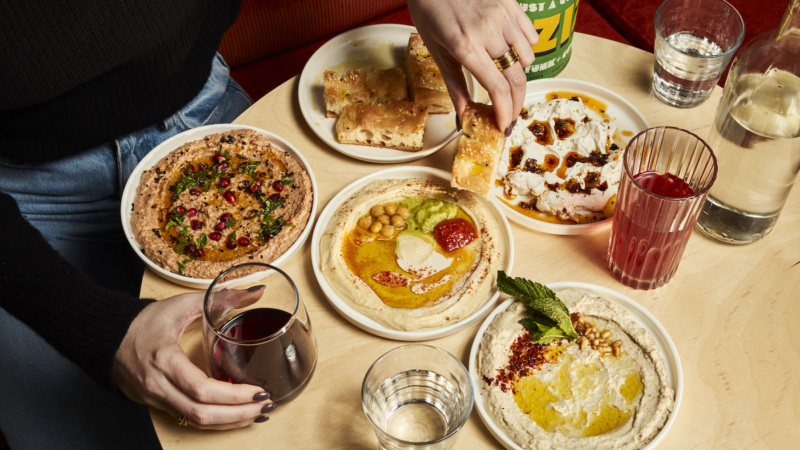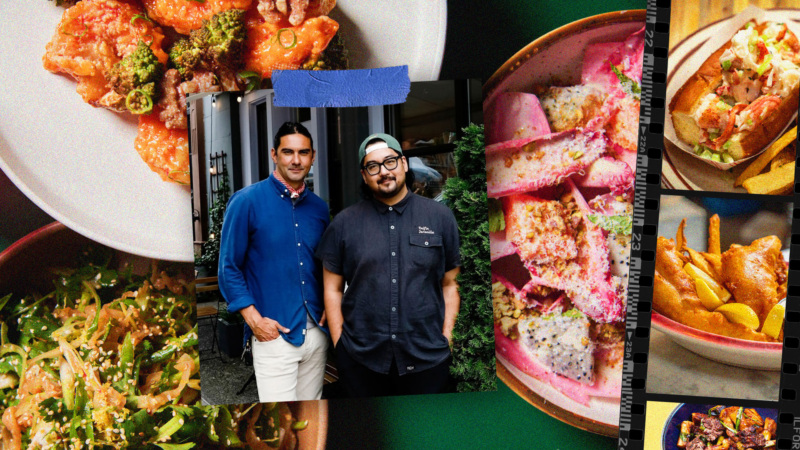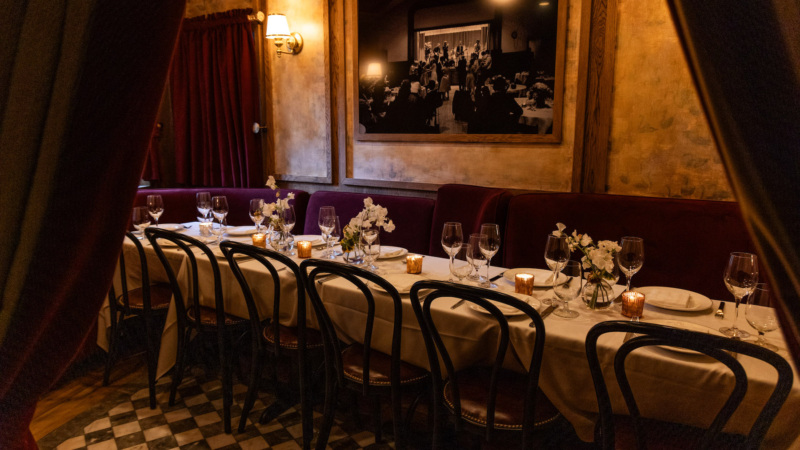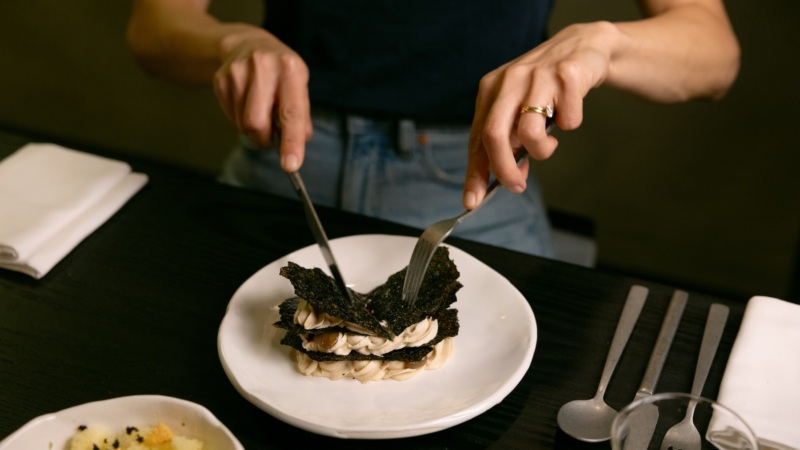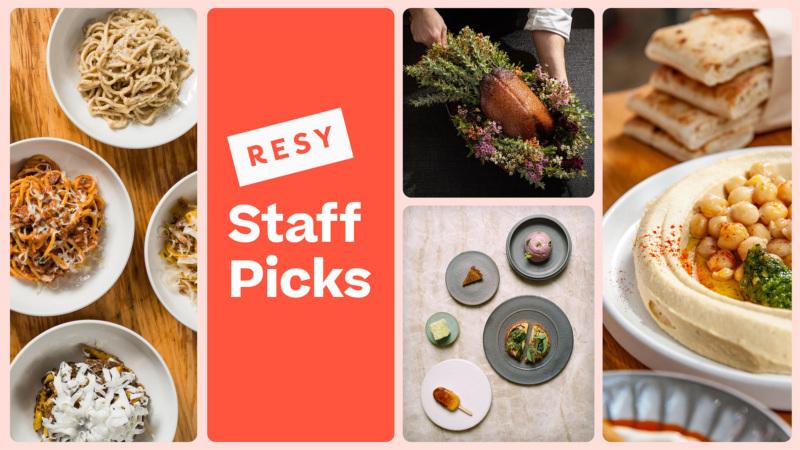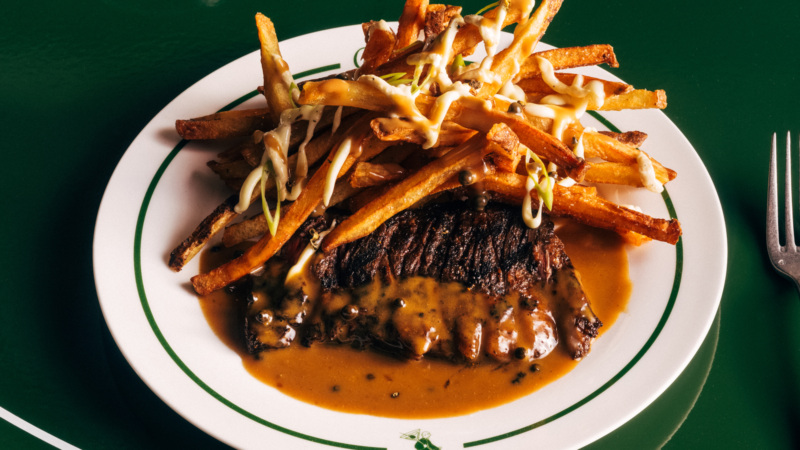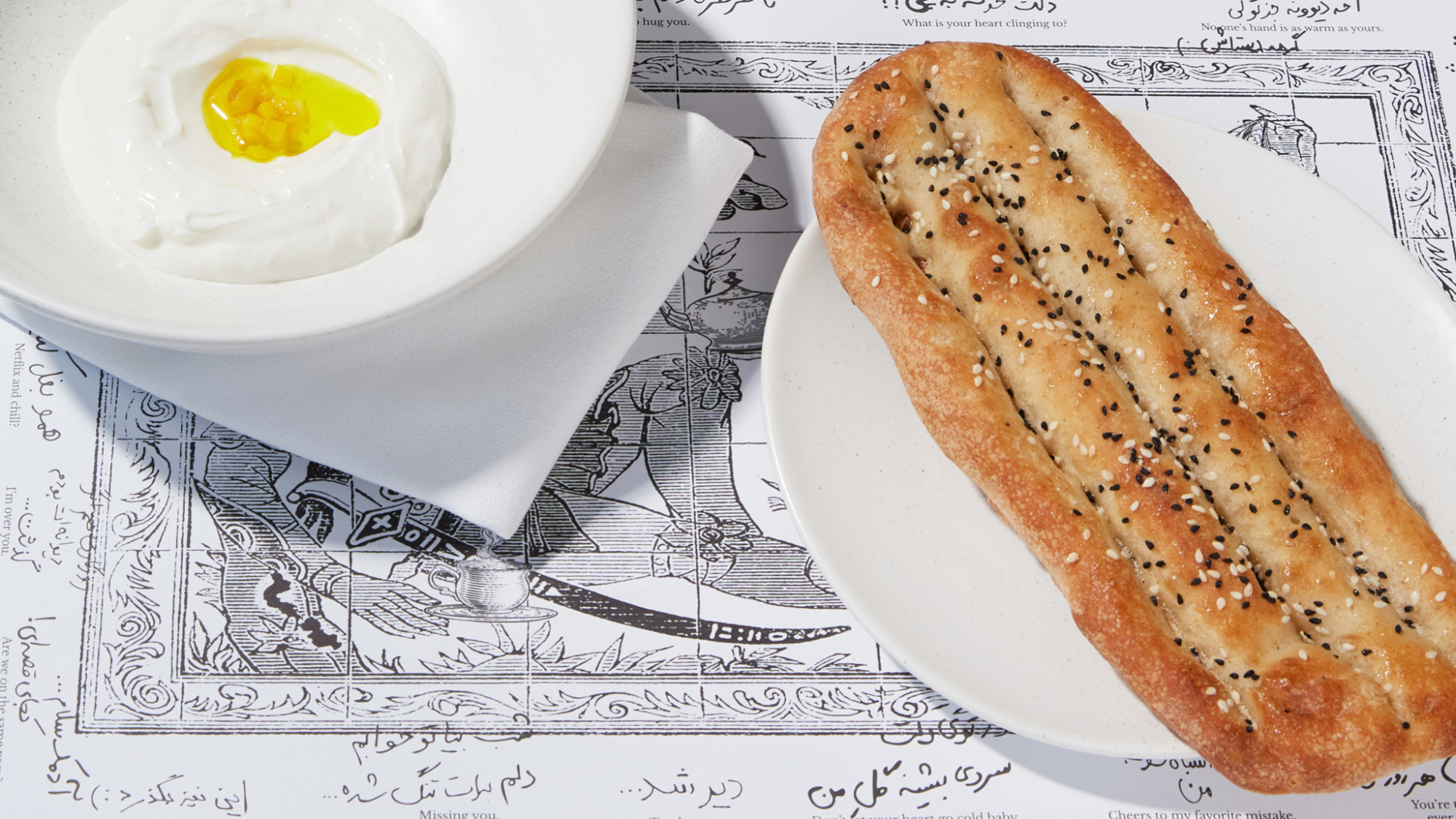
How Ali Saboor Pushes the Envelope on Persian Cooking at Eyval
Eyval sits in a bright, sun-filled space in Bushwick, Brooklyn. White brick walls and prim wooden chairs serve as a neutral backdrop for the colorful food that chef and owner Ali Saboor serves here. It’s a Persian restaurant, with dishes like mast-o musir, a yogurt dip with pickled shallots and mustard oil; kabob grilled over charcoal; and potato tahdig with tomato and sour plum sauce. And while Iranians and Persians may not recognize some of the dishes at first glance, Saboor says the flavors are meant to bring you right back home.
“People can bring their friends and share their culture and cuisine,” Saboor says. “And I’m trying to give them a new way to look at their food and their own ingredients. It’s a combination of traditional flavors, but also using the Iranian pantry to come up with things that make sense. It’s not 40 years ago in Iran. We’re in Brooklyn, and we try to use what’s around us and what’s seasonal.”
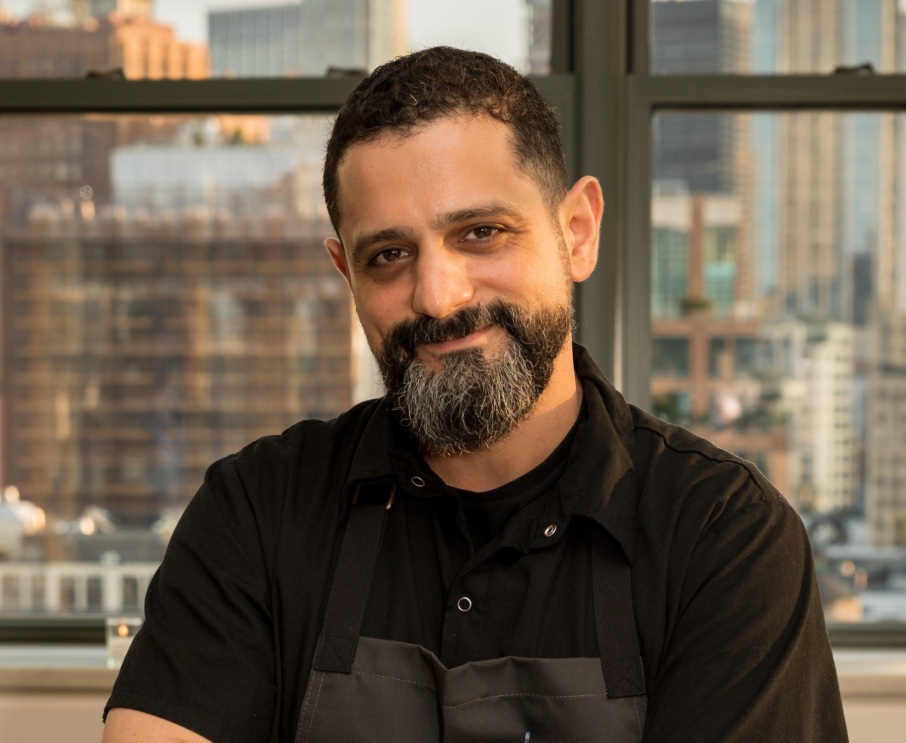
Saboor first gained notoriety as one of the original chefs at Brooklyn’s Sofreh, a widely beloved and perpetually packed Persian restaurant just a few neighborhoods away in Prospect Heights.
“Sofreh was the beginning of this journey. We were really trying to slowly push the envelope,” Saboor said. “Here, we’re continuing that and pushing it a little further. The food here is live fire cooking, a little more contemporary, and a little more me.”
Here’s a closer look at five dishes, in Saboor’s own words, which best exemplify the menu at Eyval.
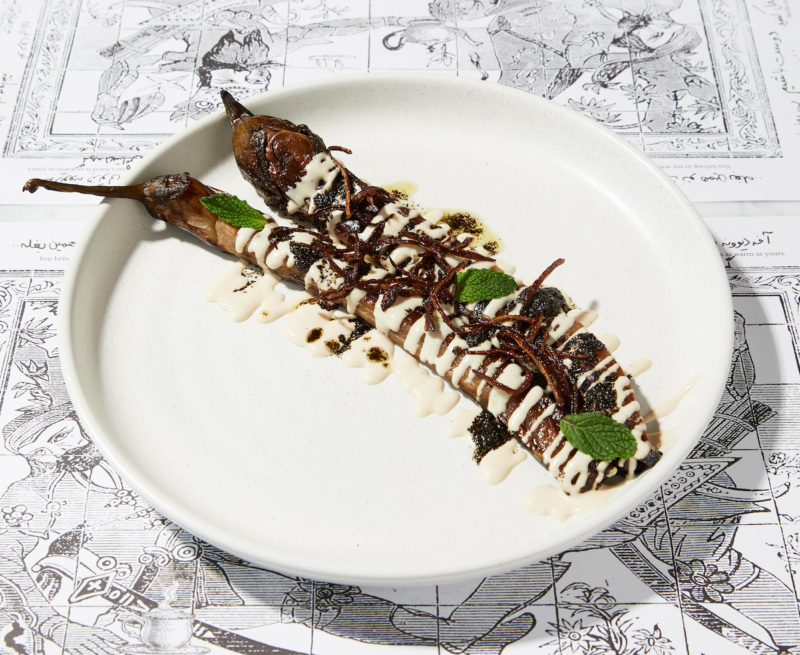

1. Eggplant and Cured Yogurt Kashke Bademjan
Mint oil, fried onions, garlic chips, walnuts
“It’s a whole roasted eggplant served with cured yogurt, mint oil, fried onions, and garlic. What I really like about this dish is that it kind of embodies our approach to Iranian food. It has very traditional flavor profiles, and we’ve put our own touch on it to make it unique by serving the eggplant whole and roasted.
“My favorite flavor in the dish is the cured yogurt, what we call kashke. It’s a very old way of preserving yogurt by salting and drying it, and then rehydrating it essentially before refrigeration. It has a really cool umami flavor note that’s really balanced with the mint oil. It sounds kind of crazy, but when you try it, you think, ‘Wow, this is a really unique flavor profile.’ Like I said, it’s very traditional and I did not come up with this dish, but I really love it. It has lots of childhood memories attached to it. It’s my favorite appetizer that we serve.”
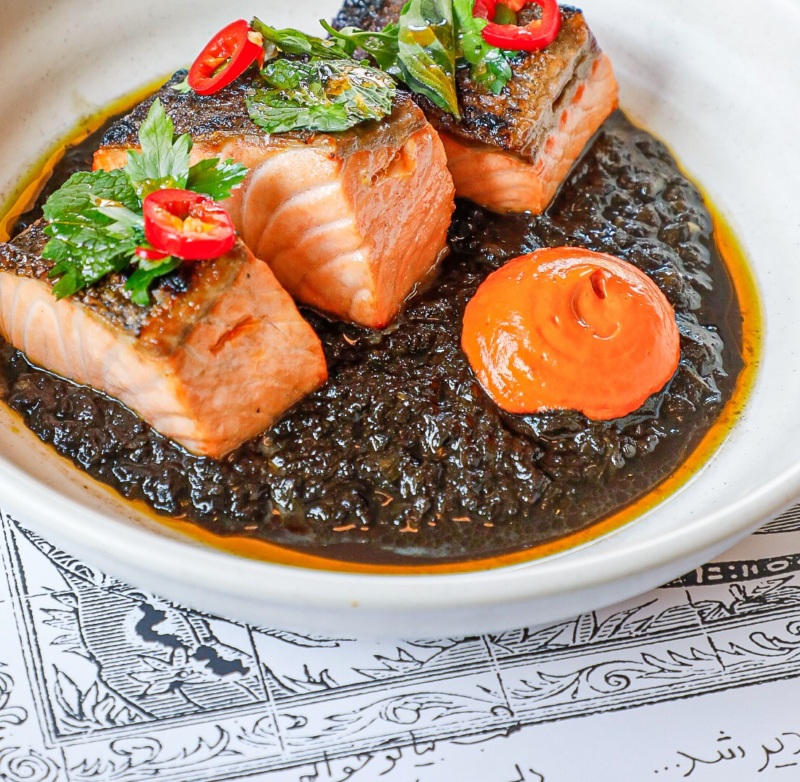

2. Salmon Kabob Ghalieh Mahi
Squid ink tamarind and herb sauce, chile, herbs
“We change which protein we serve with this dish depending on the season and what’s available, and what we’re excited about. In the past, it’s been scallops, but right now it’s with salmon. We take the salmon kabobs and grill them over charcoal until they get a nice crispy skin.
“The sauce is the really exciting part. It’s traditionally served as a stew, and it’s called ghalieh mahi, which is a tamarind and herb stew and chili stew from the south of Iran. Essentially, it’s a bunch of herbs like fenugreek, scallion, parsley, and cilantro. We take all of those and sauté them until they’re charred, then we add tamarind and chiles and cook it all down together. We finish it with some squid ink to bring a briny note in and give it a nice color.
“The fact that we double up on the chile component is really what makes it unique to Eyval. We make a Calabrian chile hot sauce that we garnish the dish with. It results in this sweet, sour, spicy sauce that we serve with salmon. It’s one of those traditional dishes that we put our own unique spin on. I really like the balance of flavors, and I really like heat, so it’s nice to have a dish that is traditionally a little spicy that we can double down on.”
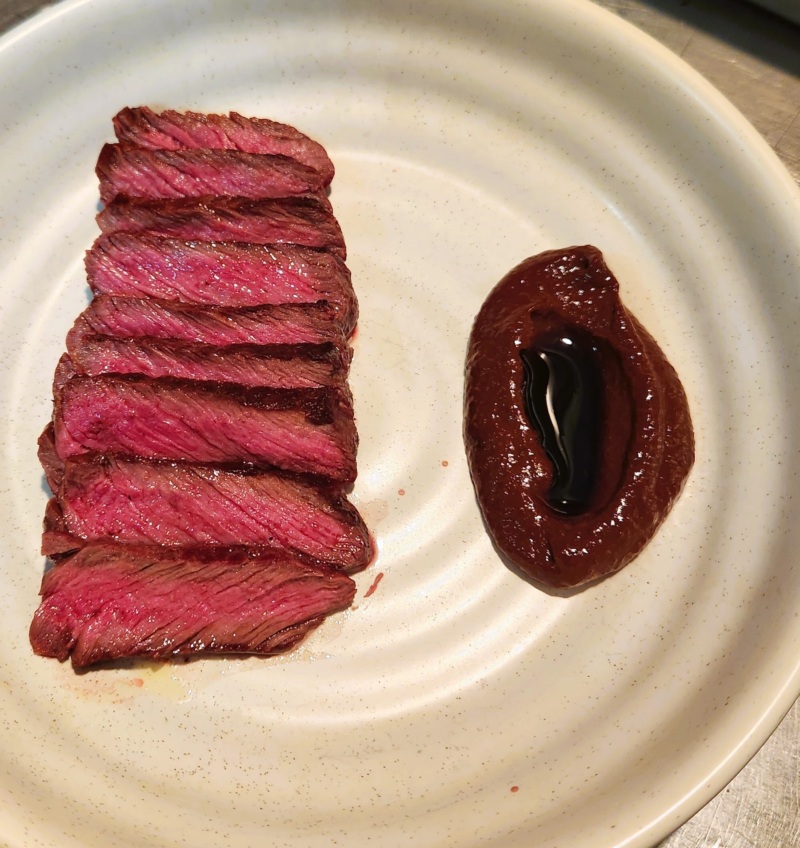

3. Charcoal Grilled Ribeye
Black garlic, black garlic molasses
“This is a pretty new dish to the menu. It’s my current favorite sauce: garlic molasses. We stumbled upon this dish by accident. The black garlic is a very traditional condiment you would have with kabobs or stews; it’s this whole garlic that’s been pickled for one to three years, or even longer if you’re lucky. It takes all these sugars and caramelizes them and we end up with this really dark garlic that has tons of flavor.
“I was meeting with one of our reps and he said that they had a black garlic molasses from Japan, which was something I’d never tried. As soon as I tasted it, I remembered the flavors of growing up and eating black garlic with kabobs. We took it, made a purée with it, and then garnished with the black garlic molasses served with a grilled ribeye. We break down the whole ribeye and take cuts from the cap and the inside of the eye that are nice and tender. Then we grill that over charcoal. It’s a very simple dish, but I feel like it carries really unique flavors that jog the memory.
“It’s only been on the menu for about a month, but hopefully I can keep it on. The one thing I always try to incorporate from my background as a chef, and from growing up cooking at steakhouses and Italian restaurants. I really like a nice piece of steak that has been cooked and sliced. It’s a bridge between that [and kabob], still with great meat and marinades and flavors, but a little more influenced by growing up here and enjoying steaks.”
4. Gheymeh Nesar
Angus short rib, pomegranate tomato sauce, almonds, orange, barberries, pistachio, basmati rice
“Traditionally, this would be small chunks of meat served with rice, so the whole thing would kind of get steamed together like a biryani, if you will. We take that idea, and we separate it. We serve the rice on the side and the stew is one piece of angus short rib that’s been braised. Then, we serve that with pomegranate tomato sauce.
“What’s really fun about this dish is all the garnishes. It has pistachios and almonds, candied orange zest, and barberries. Since I really enjoy the orange flavor in this dish, we take whole blood oranges and purée them to add a little bit of that purée to the sauce. When you’re eating it has those bittersweet notes of orange that cuts through the richness of the meat. That combination of dried fruits and nuts is very essentially Iranian; the way that we combine all those things with the rice and the meat balances everything out. It’s really fun. You get different flavors each time you take a bite.”
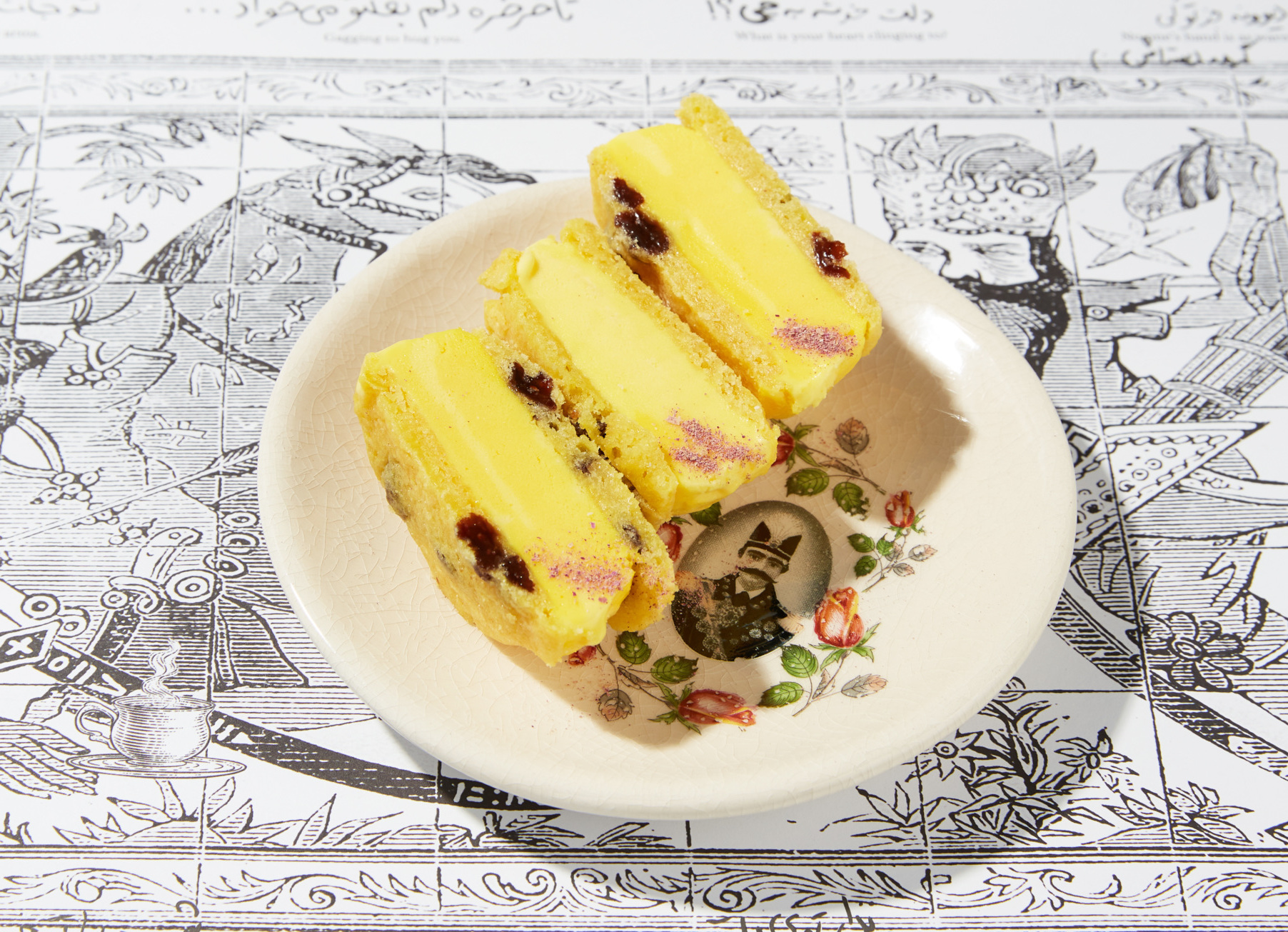
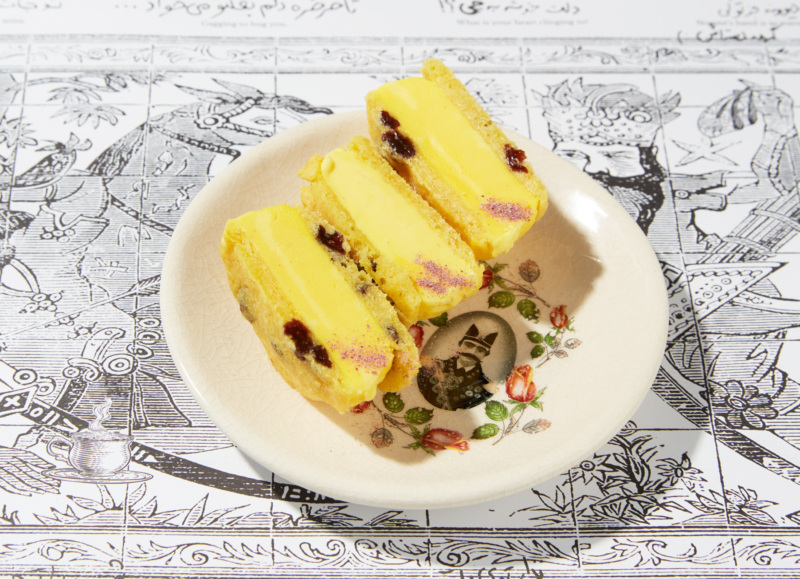
5. Saffron Ice Cream Sandwich
“This one is really cool. It’s saffron rosewater ice cream, which is super traditional and very Iranian, probably one of the oldest ice cream flavors that I’m aware of. I really like ice cream sandwiches, so I wanted to find ways to serve them. We have a saffron raisin cookie that I grew up eating. It’s a very simple cookie that’s almost like an oatmeal raisin cookie but without the oatmeal. It’s got that soft chewiness to it. We take that and we layer it with ice cream and then we put another giant cookie on top. We garnish with dried roses and pistachios to get a nice texture and a little bit of that aroma from the roses.”
Eyval is open Tuesday through Saturday from 6 to 10 p.m, and on Sunday from 5 to 9:30 p.m.
Ellie Plass is a freelance writer based in Brooklyn. Follow her on Instagram and X (formerly Twitter). Follow Resy, too.
Resy Presents
Everywhere We Want to Dine This Fall

- 18 Restaurants Across America We Can’t Wait To Try Right Now
- Where New York’s Top Chefs Plan to Dine This Fall
- The Resy Guide to Autumn in New York
- The Resy Guide to Cozy Noodle Soups in New York
- The Ultimate Guide to Burgers (and Fries) in New York
- New York’s Newest Restaurant Openings, Now on Resy
- All About Jazba, the Latest From the Junoon Team
- The October Hit List: Alma Negra, Bangkok Supper Club, Don Don and More
- All About Nōksu, the Chef’s Tasting Counter Hidden Inside a New York City Subway Station
- Eight Things to Know About the New Gem Wine



